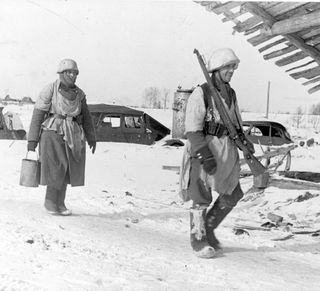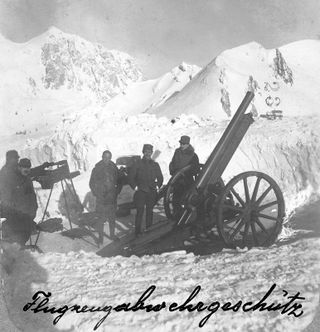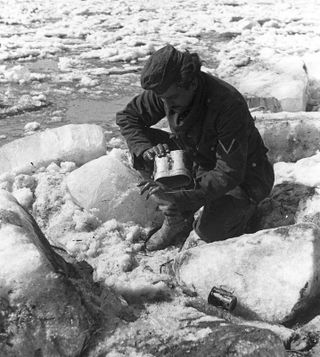The Neighbour's Story
20.10.2018 - 06.10.2019The exhibition of photographs, taken on the battlefields of the First and the Second World Wars by Joseph Pailer, an officer of the Austro-Hungarian and German armies, shows but a fragment of his extensive work which recorded the images and the story of the crucial historical events. The material of this sort deserves to be presented to a wider public, for which task the Kobarid Museum, due to its communicative power, is particularly suitable. The photographs speak about the warfare in the mountains as experienced by this officer of Graz in the troops in which his German-speaking compatriots and Slovenians from Styria prevailed. For more than 29 months, until the defeat of the Italian Army at Kobarid, he was staying on the nationally mixed territory close to Tarvisio and above the Gail valley. His brother Peter was likewise in a regiment together with the Slovenians – in the 27th Infantry Regiment.
After the defeat and the end of the war and after the new states were formed, Josef Pailer became a neighbour to the Slovenians on the other side of the border, but for two decades only. As a soldier of the Third Reich Army, in spite of his counter-regime political stand, he crossed the border with his troop during the attack on the Kingdom of Yugoslavia in April 1941 and then stayed in the occupied Maribor in the onetime cadet barracks where he was in charge of training the troops. In the recruiting area of Styria the troops of the German Army were nationally mixed at that time too. Together with his compatriots and Slovenian comrades in arms he soon experienced the hell of fire and ice of the Russian Front. After the capitulation of Italy at the end of 1943, he and the survivors came to Tarvisio, which was the second time for him. Luckily, it was just for a short time, so that he was spared the possible longer bitter chapter of fighting against the Slovenian partisans.
In addition to the outstanding material, “The Neighbour’s Story” also poses numerous questions to visitors and gives them a chance to reflect upon the frequently black-and-white and stereotype interpretations of historical events. By trying to experience the neighbour’s lot they could possibly find proper answers which will complete and widen their view of the past.






